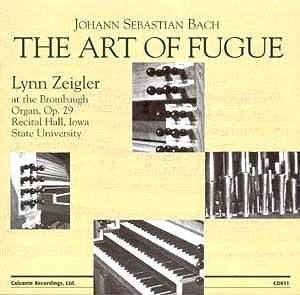 Review of Bach’s The Art of Fugue, BWV 1080
Review of Bach’s The Art of Fugue, BWV 1080
Composer: Johann Sebastian Bach (1685-1750)
Performer: Hesperion XX, Jordi Savall
Recording: Alia Vox AV9818
Release Date: March 1986 (remastered edition)
Duration: 92:25
In the vast landscape of Bach interpretations, Jordi Savall’s recording of The Art of Fugue emerges as a significant and innovative contribution, particularly as it has been re-released with remastered sound quality and new packaging. Originally a landmark release in 2001, this recording continues to resonate with audiences and scholars alike, offering a unique perspective on Bach’s intricate and enigmatic work.
The Art of Fugue, composed in an open score format and left unfinished at the time of Bach’s death, is a profound exploration of counterpoint, featuring a series of fugues and canons built around a single musical subject. The work’s structural complexity is matched only by its philosophical depth, as it invites performers and listeners to engage with its mysteries. Savall’s arrangement for two distinct instrumental groups—four winds (cornet, oboe da caccia, tenor trombone, and bassoon) and four viols—allows for a textural richness that is both intimate and expansive. This duality is crucial to interpreting Bach’s sound world, as it highlights the interplay of voices in a manner that a harpsichord or organ cannot replicate.
In his liner notes, Savall emphasizes the “mystery” inherent in Bach’s music. This is particularly evident in the handling of Contrapunctus 11, the triple fugue. Here, the interplay between the wind and viol groups creates a tapestry of sound that is both lucid and dense. The winds initiate the thematic material, weaving a dialogue that the viols subsequently enrich. The careful balance achieved by Savall allows each voice to be distinctly heard while maintaining a cohesive ensemble sound—a feat that underscores the contrapuntal mastery of Bach.
The choice of instrumentation in this recording is not without precedent, yet Savall’s implementation is particularly striking. The winds provide a bright, penetrating clarity, while the viols contribute a warm, sonorous foundation. This combination is particularly effective in the canons, such as those found in Canons 14 and 15, where the stark, minimalist scoring for two viols allows for a profound exploration of counterpoint. The contrast between the sparse textures of the canons and the more elaborate fugues serves to illuminate Bach’s compositional technique, where every note is imbued with meaning and purpose.
The engineering of this recording is exemplary, capturing the nuanced interplay between the instruments with remarkable clarity. The acoustic of the Collegiale St. Jean-Baptiste in Roquemaure, where the recording took place, lends a natural resonance that enhances the listening experience. Each phrase and articulation is rendered with precision, allowing the listener to appreciate the subtleties of Bach’s intricate lines.
Historically, The Art of Fugue has been subject to various interpretative approaches, from the austere harpsichord renditions by Davitt Moroney and Robert Hill to André Isoir’s organ interpretations. Each has its merits, but Savall’s orchestral arrangement stands apart for its ability to convey the emotional depth of the work. Bach’s final fugue, which tantalizingly concludes with the notes B-A-C-H, embodies the essence of the composer’s voice, resonating with an unfinished quality that speaks to the listener on a deeply personal level.
In conclusion, Savall’s The Art of Fugue is not merely an interpretation; it is an invitation to delve into the heart of Bach’s genius. The innovative instrumentation, combined with a profound understanding of the music’s structural and emotional complexity, makes this recording one of the most compelling available. It is a testament not only to Bach’s artistry but also to Savall’s vision, embodying the rich tapestry of sound that defines this monumental work. For anyone seeking to explore the depths of The Art of Fugue, this recording is an essential addition to their collection.


![Bach’s Sacred Works: A Captivating Exploration by [ Performer Name ]](https://classicalguy.com/wp-content/uploads/2024/11/cover-339.jpg)
